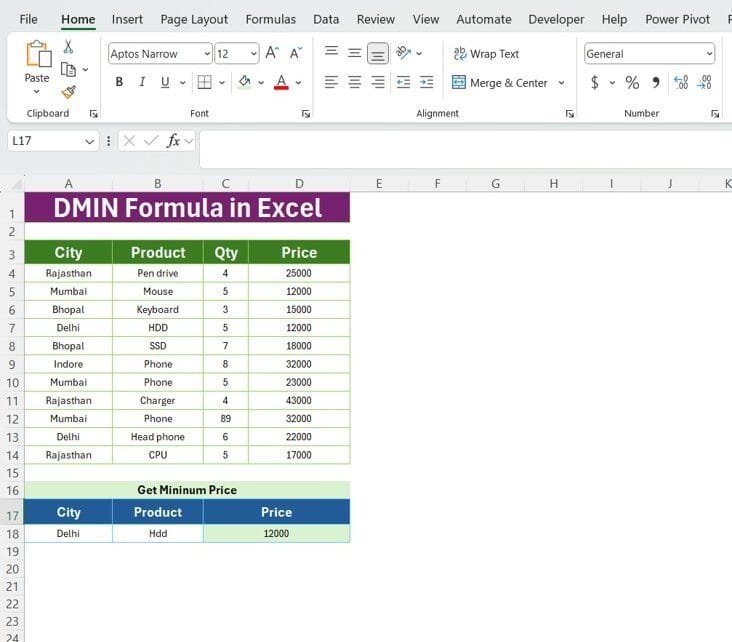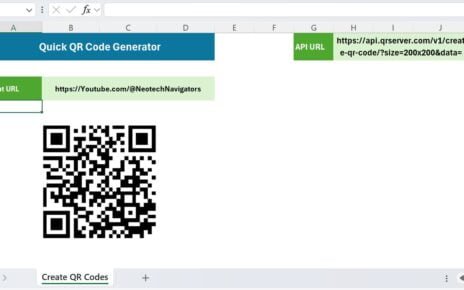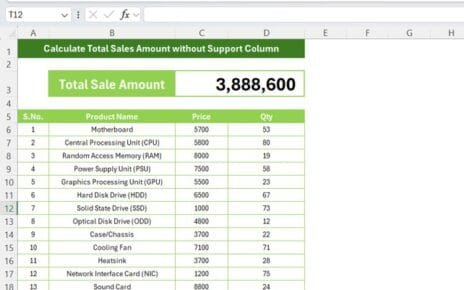If you’ve ever worked with large datasets in Excel and needed to find the minimum value based on certain criteria, you’re in the right place! Today, we’re going to explore the DMIN Formula in Excel, a super handy tool that helps you find the smallest number in a column, but only if it meets your specific conditions. Let’s walk through this step by step, making it as easy and engaging as possible.
What is the DMIN Function in Excel?
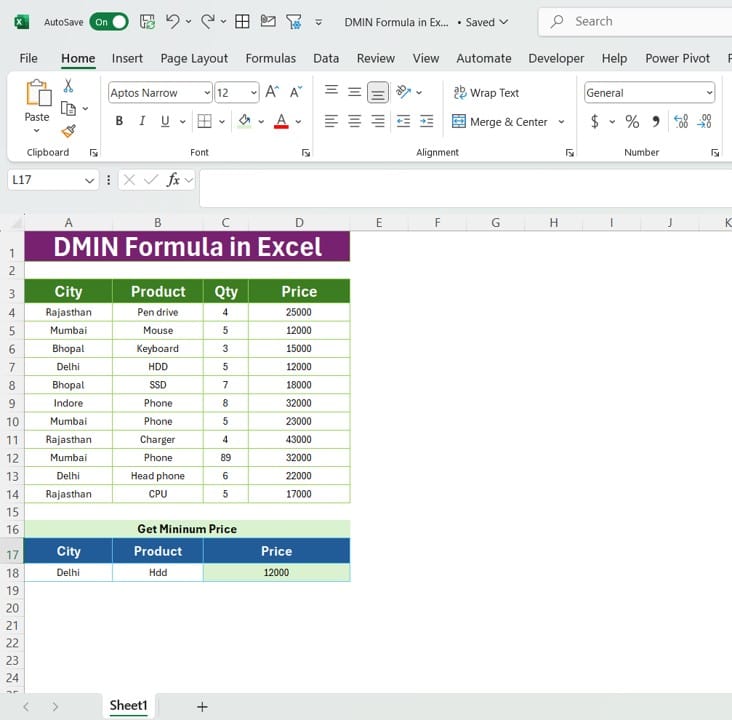
First things first, let’s understand what the DMIN Formula in Excel does. Essentially, it lets you return the minimum value from a specific column of numbers based on the conditions you set. Sounds useful, right? This function comes in handy when you need to filter data and only want the smallest value that fits your criteria. Whether you’re working with sales data, employee records, or product lists, the DMIN Formula in Excel will make your life easier.
The formula for DMIN looks like this:
=DMIN (database, field, criteria)
- database: This is the range that contains your data (including headers).
- field: The column where you want to find the minimum value.
- criteria: The range where you set the conditions for filtering your data.
Now, imagine you want to find the lowest price of an HDD in Delhi. Instead of manually scanning the table, you can use the DMIN Formula in Excel to quickly pinpoint the answer.
How to Use the DMIN Function: Step-by-Step
Let’s walk through the steps to use the DMIN Formula in Excel to solve this:
- Set Up Your Data: First, ensure that your data is organized into columns with headers. In our case, we have our data in cells A3
- Define Your Criteria: Now, we need to set the conditions for our search. In this case, we want to find the minimum price of HDDs sold in Delhi. So, our criteria would be:
- Place these criteria in another part of your sheet (we’ve used cells A174.)
- Apply the DMIN Formula: Next, it’s time to use the DMIN formula. Here’s how we do it:
=DMIN (A3:D13, “Price”, A17:B18)
- A3: This is our database that contains all the data.
- “Price”: This tells Excel that we’re looking at the Price column for the minimum value.
- A17: This is where we’ve set our criteria (City = Delhi and Product = HDD).
- Check the Result: Once you hit Enter, Excel will return the result. In our example, the minimum price of an HDD in Delhi is 12,000.
Why Use the DMIN Function?
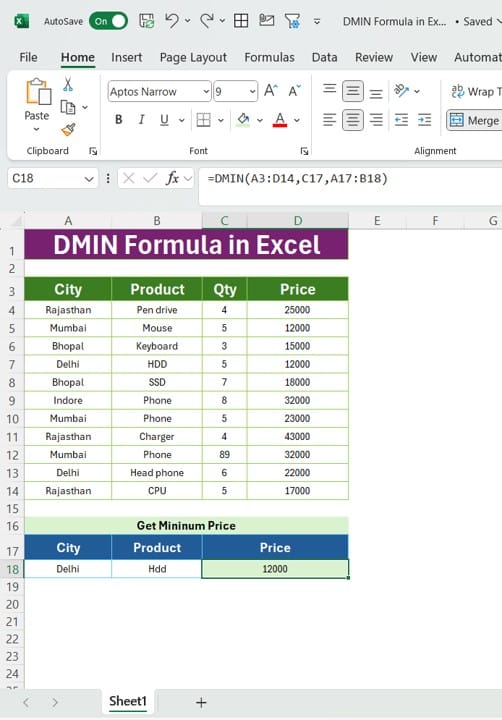
At this point, you might be wondering why you should even bother using the DMIN function. Well, let me tell you a few reasons why it’s such a great tool:
- It saves you time: Instead of manually searching for the minimum values, Excel does it for you in seconds.
- It’s flexible: You can apply multiple criteria to narrow down your search, making it ideal for large and complex datasets.
- It’s accurate: You won’t have to worry about missing a value or making a mistake while searching for data.
Conclusion: Making Excel Work Smarter for You
By now, you’ve seen how powerful and efficient the DMIN function can be. Whether you’re dealing with a small dataset or a large one, this function helps you find the minimum value based on the conditions you set—quickly and easily.
So, next time you’re working with a spreadsheet and need to find the smallest number for a specific condition, give the DMIN function a try! You’ll be amazed at how much time it can save you, especially when you’re working with large amounts of data. Excel has so many hidden gems, and the DMIN function is just one of them. Keep exploring, and you’ll unlock even more powerful tools to enhance your data analysis!
Visit our YouTube channel to learn step-by-step video tutorials
View this post on Instagram
Click hare to download the practice file
